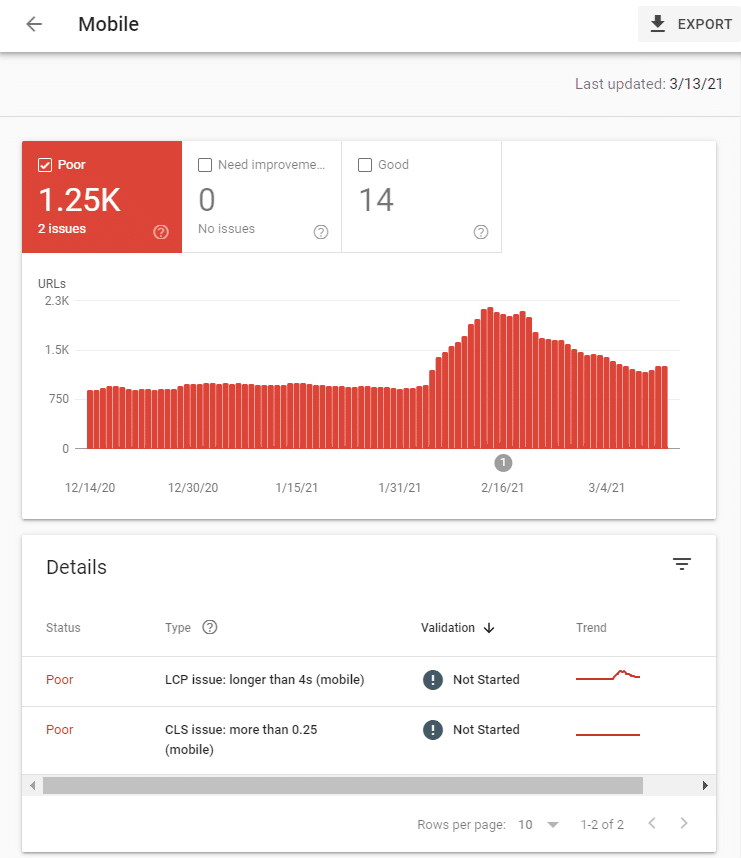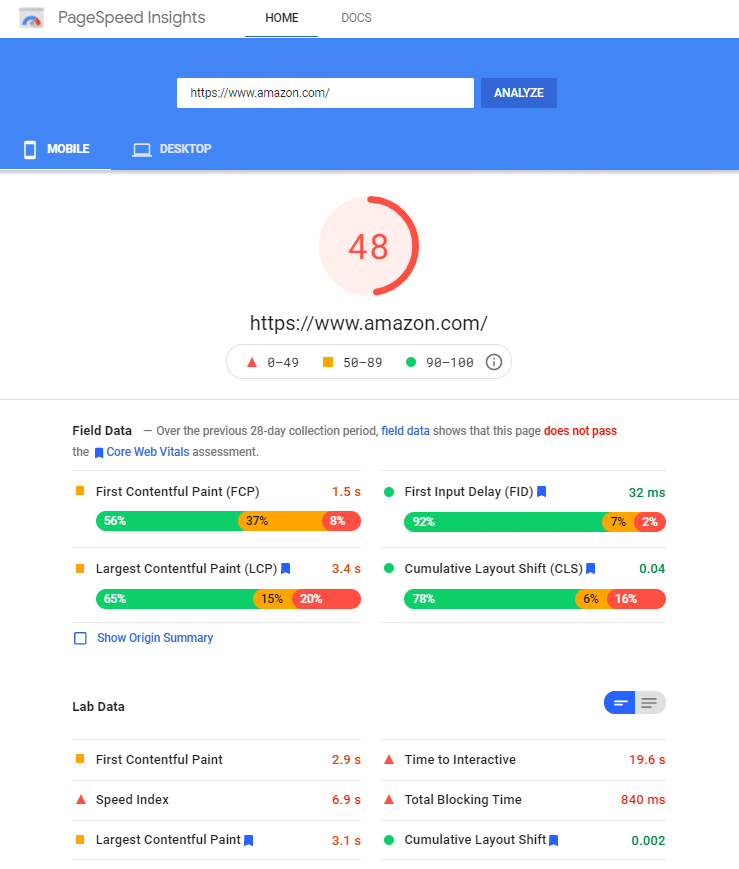Google’s core web vitals, which focus on site speed, will become organic ranking signals in two short months. Will your site’s search engine optimization be ready, or will your competitors speed past?
Google pre-announces its most massive algorithm updates when they’re focused on specific elements, like this core web vitals update. That’s a critical signal that core web vitals will likely produce a marked change in the organic search results landscape.
What Are Core Web Vitals?
Also known by its acronym CWV, Google’s core web vitals encompass three page-speed measurements that impact the experience that searchers have when they land on each page of your site:
- Loading: The largest contentful paint (LCP) measures the time it takes for the bulk of the page’s first screen view to appear to the extent that it can be understood. For a poor LCP experience, think of a site that shows a blank white screen for seconds while it loads its content.
- Interactivity: The first input delay (FID) measures the time that passes before the visitor can take action. Poor FID experiences would include the inability to click to another page, add a product to the cart, or enter a query in the site’s search bar for a length of time.
- Visual Stability: The cumulative layout shift (CLS) measures the amount your page shifts vertically as it loads interactive pieces, images, ads, and other elements. Visitors would have worse CLS experiences on sites where the link they’re just about to click suddenly shifts two inches down the screen, or the text they were reading unexpectedly shifts out of their screen view.
What’s Your Current CWV Performance?
Measuring your site’s current core web vitals performance is simple since Google uses its Chrome browser to collect anonymized, real-world performance data continuously. Tools like Search Console’s Core Web Vitals report and PageSpeed Insights pull from that user data to create reports that help understand your site’s performance.

To see the performance for every page on your site at once, use Google Search Console’s Core Web Vitals report. As seen in the image above, each page is classified as performing in the poor, needs improvement, or good category. The specific data for each page is shown after you click on one of the rows in the “Details” section. However, the CWV report doesn’t give you suggestions for resolving the issues. For resolution, see the PageSpeed Insights tool.

Google’s PageSpeed Insights tool displays a simple red-yellow-green visual and numerical score for any URL entered. Unfortunately, pages can only be analyzed one at a time, unlike the CWV report on Google Search Console. Choose representative URLs from the Google Search Console CWV report to analyze in the PageSpeed Insights report.
Most complex content and ecommerce sites — like Amazon’s homepage shown above — return mediocre or poor scores on PageSpeed Insights. But the report does list some resolution options, as well as the amount of improvement each suggested action would result in.
When used together, these two tools will give you a decent idea of where to focus.
What’s a Good CWV Performance?
Google defines “good” core web vitals performance as measuring in the 75th percentile of page loads. Mobile searches are measured separately from desktop searches due to the dramatic differences in formatting, data speeds, and processing power. For each metric, on either mobile or desktop, the 75th percentile measures at:
- LCP: 2.5 seconds
- FID: 100 milliseconds
- CLS: 0.1
How Can You Optimize Your CWV?
Site speed is a technical SEO challenge, making core web vitals somewhat tricky for many marketers. Only a developer can perform the analysis and optimizations that can improve your CWV scores. You can start the conversation by collecting the data and suggestions for resolution from the tools above.
Whether you’re ready or not, core web vitals will be a Google organic ranking signal in May 2021. Even if your developers prioritize CWV optimization, resolving the issues takes some heavy lifting and will take time. Start the conversation now to ensure you have the edge over your competitors in Google’s organic rankings.



